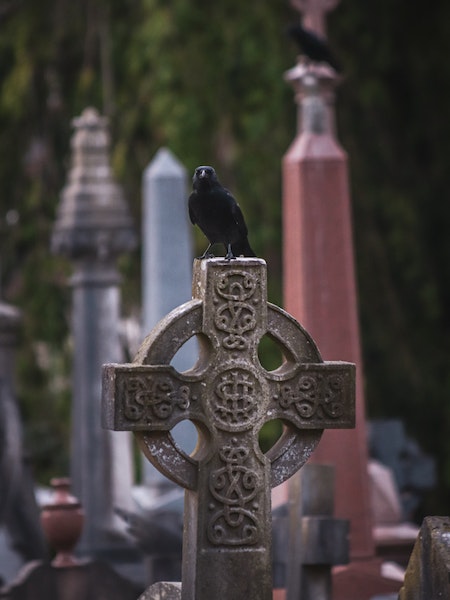Hello, Kids and All Readers,
You might say I’ve gone “raven mad” lately. I refer to the bird, not my mental state!
Research for my Book 5, Jacaranda Street: Gravestone Image, has taken me to many sites about Edgar Allan Poe and ravens. I can’t seem to get enough of either topic.
But for today, I hope to make you just as enthralled with ravens as I am.
Here are some fascinating facts about these magnificent birds that I gathered from farmersalmanac.com and mentalfloss.com:
- Ravens love to play. These sky acrobats can fly upside down and turn somersaults. Young ravens drop sticks in flight, then swoop to catch them.
- Ravens can talk and sing. These black birds can make 100 or more vocalizations with their deep voices. Ravens, be they pets or wild, enjoy mimicking human speech and bird and animal sounds. When the bird in Edgar Allan Poe’s poem “The Raven” said, “Nevermore,” that is realistic! (Hint: Watch for a talking raven in my Book 5 this fall!) If you’d like to hear Fable the pet raven vocalize on a YouTube video, please click HERE.
- Ravens are clever and intelligent. They often work in pairs to find food and will steal food from people and other animals without remorse. Ravens are ranked in an intelligence class with dolphins and chimpanzees. They make tools to help find and bury food.
- Ravens eat anything they want. They are omnivorous and hunt their own food, steal it, or eat roadkill. They also enjoy insects, eggs, seeds, and berries. Like squirrels, they will hide food for lean times.
- Ravens have been the subjects of legends and lore. To some, ravens are dark and mysterious birds, appearing in literature throughout history and across many cultures. Some consider them harbingers of death and misfortune. Others see them as symbols of good luck. Edgar Allan Poe described his midnight-visitor raven as “grim, ungainly, ghastly, gaunt, an ominous bird of yore.”
- Ravens are adaptable to different environments. They live in the snow, deserts, mountains, and forests and have a lifespan of twenty-five to thirty years.
- Ravens roam in teenage gangs. Once they mate, they pair off and mature.
- Ravens can show empathy. They can express concern for an injured bird, recognize a “friend” up to three years after seeing them, and even hold a grudge!
- Ravens have been kept at the Tower of London for centuries. The Ravenmaster cares for the tower ravens. They are considered good luck symbols, believed to protect the Crown (Britain) and the Tower.
- Ravens appear in the Bible in the Book of Genesis and in 1 Kings.
So, get a clue, Readers. How are ravens and crows alike and different? You can find out from the Audubon Society HERE. Now, maybe you’re raven mad, too!
(Photo credits, left to right: Meg Jerrard, Steve Harvey, and Mel Poole on unsplash.com. Far right: Boys in Bristol Photography on pexels.com)
- Common Raven
- Ravens have a four-foot wing span
- “Quoth the Raven, ‘Nevermore!'”
- Harbingers of death?










